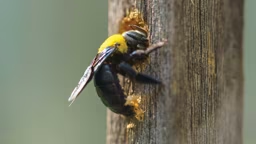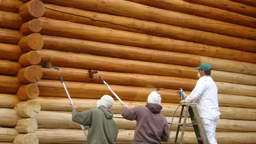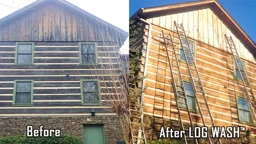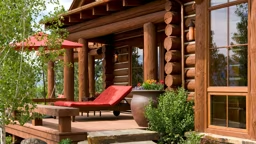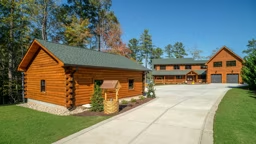
For many log home owners, birds can be something of a mixed blessing. They bring music and liveliness to a property, but they’re often drawn to building nests beneath the eaves or in the nooks and crannies of a log house, which can result in messy droppings and potential attic dwellers. You may even be raising a fresh generation of woodpeckers, which could grow up to cause damage to your log walls.
A better solution is to create bird sanctuary spaces — even a bird perimeter — located away from your house, that will naturally attract all sorts of species. You get the pleasure of bird watching, the cheerful song and that nestled-in-the-woods feel without the hassles or cleanup. Here are some must-haves for creating areas where birds can hang out at a safer distance:
Bird Feeders
Having a variety of feeders will draw a wider range of bird species. For example, platform-style feeders often attract larger birds like blue jays, but finches prefer tall, cylindrical feeders with small perches. Woodpeckers and nuthatches prefer suet blocks that hang in small cages, and placing these as far from the house as possible could alleviate potential issues. You also can hang nectar feeders that will attract hummingbirds or orioles.
Water sources
Bird baths are often beautiful decorative pieces that serve as gathering spots for our feathered friends. Be sure to place good-sized rocks in larger baths so that birds can land in the center instead of having to sip from the side. Birds are also attracted to the sound of running water, so small fountains can make a pretty and practical addition to a garden. Many are solar-powered, so you don’t need to run electrical wiring to operate them, and they can be easily relocated.
Shelter
Trees and bushes usually provide enough shade and resting spots, but you may want to put up small birdhouses or sheltered platforms if you’re creating your sanctuary in the middle of grassy areas or among the flowers. Consider planting small trees or ornamental grasses, since these can provide nesting spaces and increase the attractiveness of your garden stretch in the process.
Another consideration is to locate these bird-friendly spaces away from any vegetable gardens or fruit trees, unless you plan on sharing your bounty with your winged residents. Areas that have plenty of non-fruiting trees, bushes, vines and flowers can make a happy refuge for birds, and placing garden benches there will let you enjoy watching them as they come and go.
See also How to Deal With Carpenter Bees




